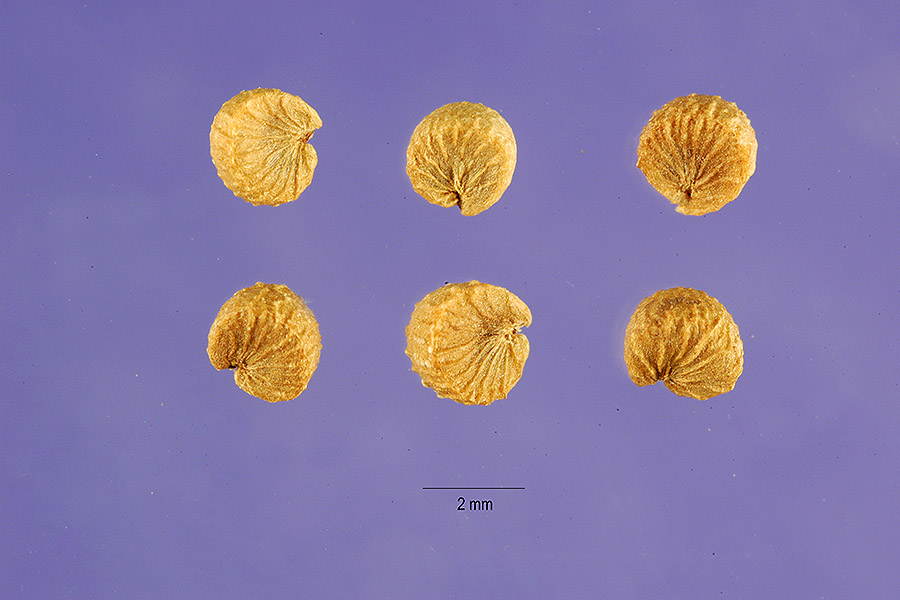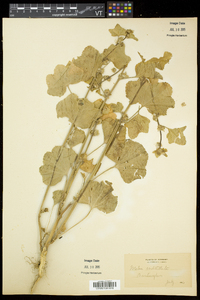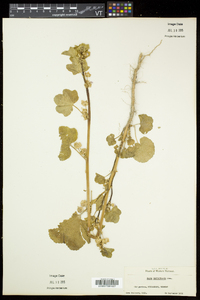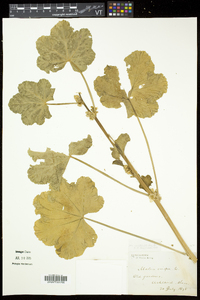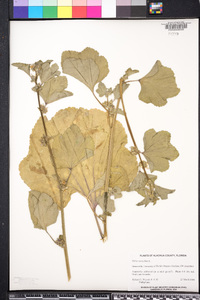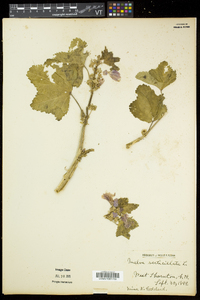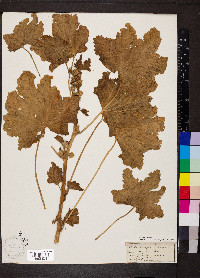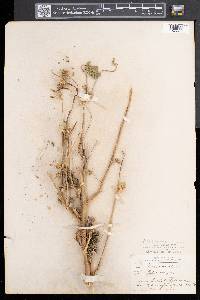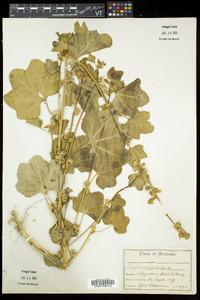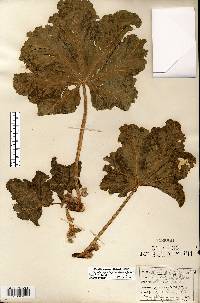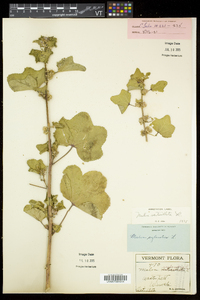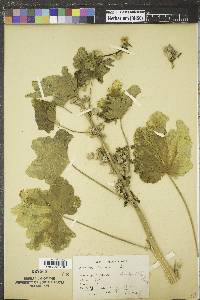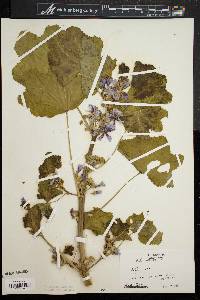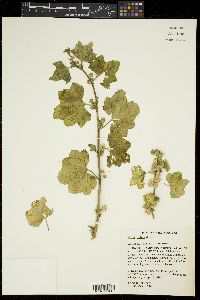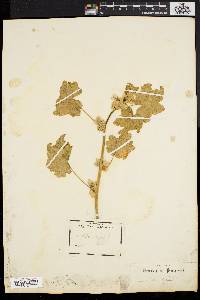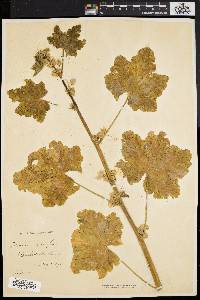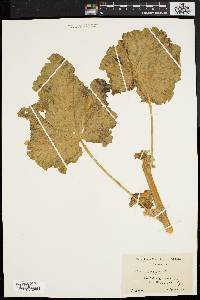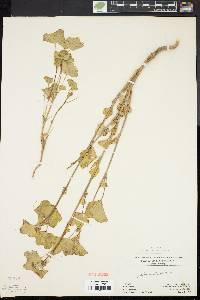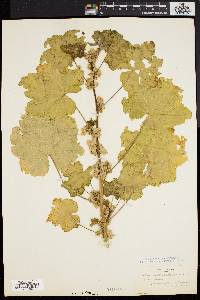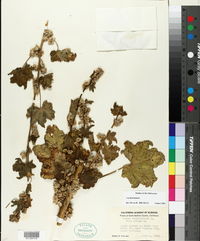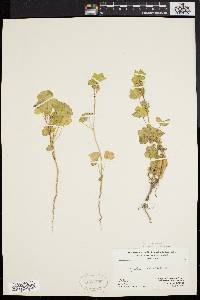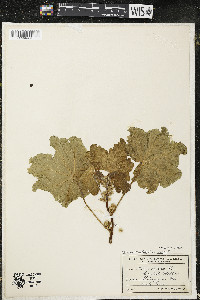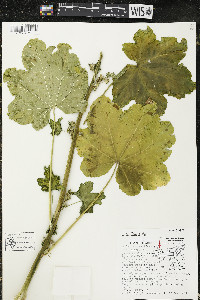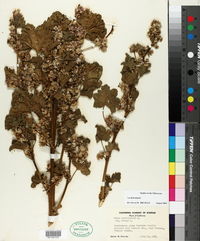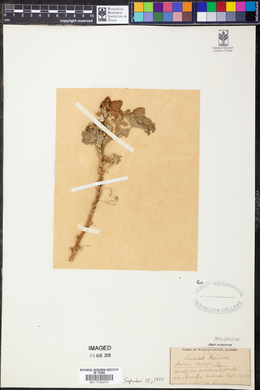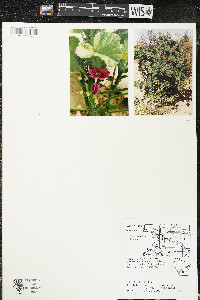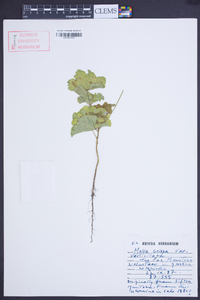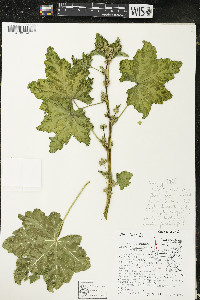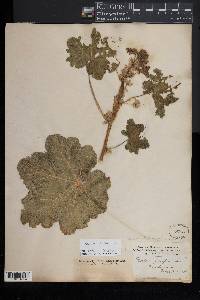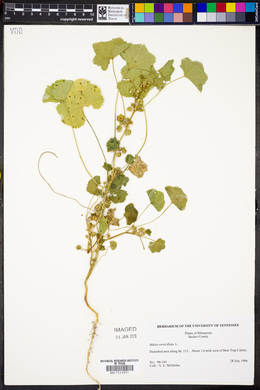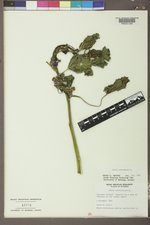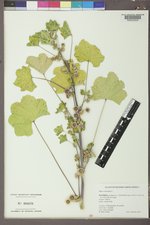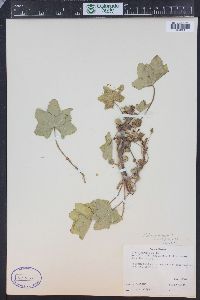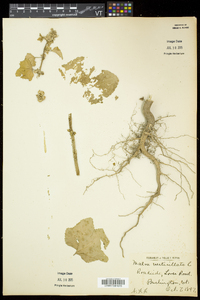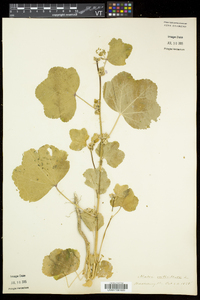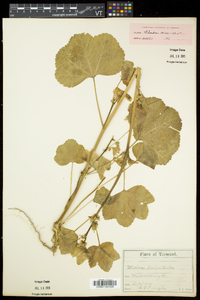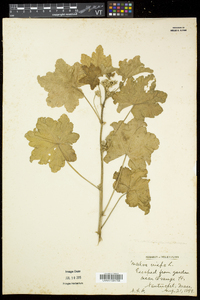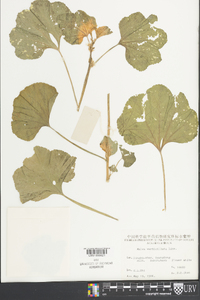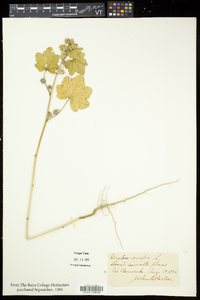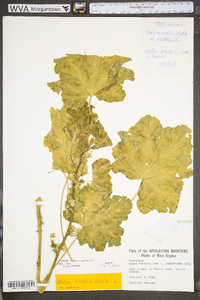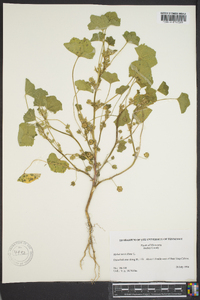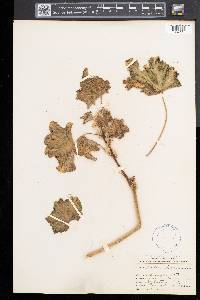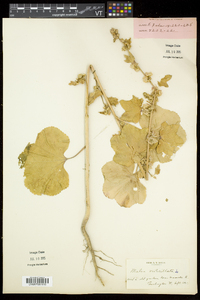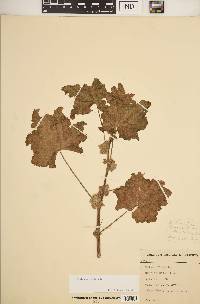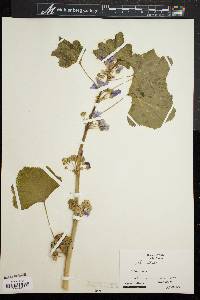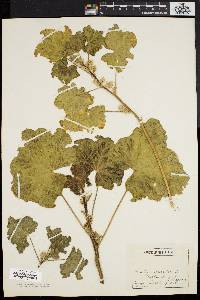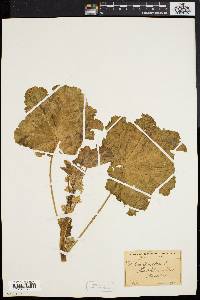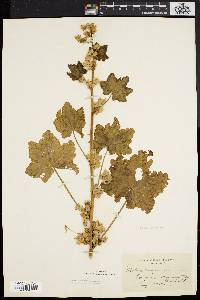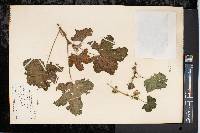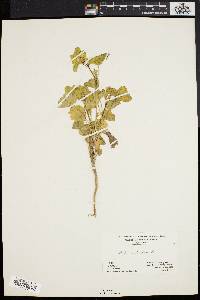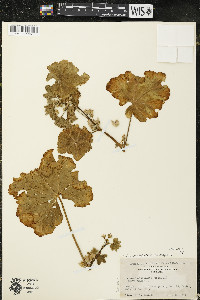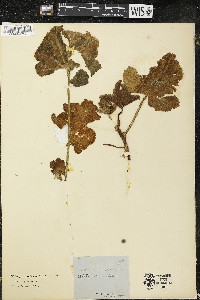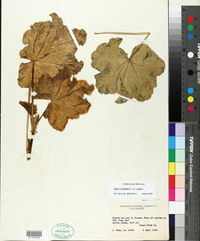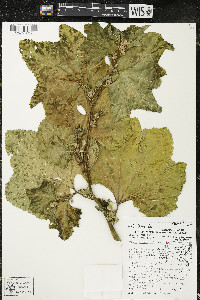Malva verticillata
|
|
|
|
Family: Malvaceae
Large-Whorl Mallow
[Malva abyssinica A. Braun, moreMalva crispa L., Malva verticillata var. crispa , Malva verticillata var. verticillata] |
Annual herb to 2 m tall Stem: erect, hairless or with a few spreading branched hairs above. Leaves: alternate, long-stalked, broadly blunt-toothed, large (6 - 20 cm wide), nearly circular to plump kidney-shaped in outline with five to eleven fairly rounded lobes. The edges of the leaves may be wrinkled and puckered (crisped). Flowers: many, stalkless, densely clustered in upper leaf axils, white or bluish white, small (under 2 cm diameter), radially symmetric, with five petals, and sepals immediately subtended by three, narrow, hairy-edged bractlets. Sepals: five, but fused at base, then separating into five triangular to narrowly egg-shaped lobes with pointed tips. The calyx as a whole is covered with short hairs, is at least half the length of the petals, and enlarges greatly in size when in fruit. Petals: five, white or bluish white, up to 0.7 cm long (up to two times longer than sepals), somewhat heart-shaped with narrow base and indented at tip. Stamens: numerous, but filaments fused into an elongate tube with the anthers protruding near the top. Pistil: enclosed by the stamen tube, with at least ten superior carpels (ovule-bearing structures), ten or more slender styles coming up through center of stamen tube, and ending with exserted, slender stigmas facing inward. Fruit: a ring of ten or more, one-seeded, somewhat hard, dark, strongly veined (on sides), weakly ridged, about 2 mm tall, somewhat circular, beakless, wedge-like segments (mericarps) subtended by the much enlarged persistent sepals atop a very short stalk (under 1 cm). The ring of fruit segments looks similar to a peeled tangerine or clementine fruit where the slices or wedges would be analogous to the mericarps. Mericarps typically separate from each other for dispersal, but do not open to release the seed (indehiscent). Similar species: In our area, Malva verticillata is most similar to M. neglecta, but that species has the petals at least twice as long as the sepals, the fruit stalks are over 1 cm long, and the calyx does not enlarge much from when flower to fruit. This species may also be considered similar to M. sylvestris, but that species has obviously stalked flowers, the subsepal bractlets are wide and egg-shaped, the petals are much longer, and the mericarps are larger and very deeply pitted on the outside. Flowering: July to September Habitat and ecology: Introduced from Europe, occasionally escaping from gardens or in waste places. Occurence in the Chicago region: non-native Notes: One specimen of this species collected from our area has crisped leaf edges. Sometimes this entity is separated as a variety, M. verticillata var. crispa, or even as a separate species, M. crispa. We follow the usage as in Flora Europaea (Dalby 1968), which places all forms under the one species. Etymology: Malva means Mallow. Verticillata means whorled, in reference to the stalkless axillary flower clusters. Author: The Field Museum Erect annual to 2 m, with large, long-petioled lvs mostly (6-)8-15(-20) cm wide, reniform, with 5-7 rounded, crenate lobes, the upper on progressively shorter petioles; fls subsessile in axillary fascicles; pet 6 mm, white or bluish-white; fr as in no. 6 [Hypericum boreale (Britton) E. P. Bicknell]; 2n=ca 84. Probably native of e. Asia, escaped from cult. here and there in our range. July-Sept. One form has the lvs crisp-margined. Gleason, Henry A. & Cronquist, Arthur J. 1991. Manual of vascular plants of northeastern United States and adjacent Canada. lxxv + 910 pp. ©The New York Botanical Garden. All rights reserved. Used by permission. From Flora of Indiana (1940) by Charles C. Deam Indiana Coefficient of Conservatism: C = null, non-native Wetland Indicator Status: N/A |

